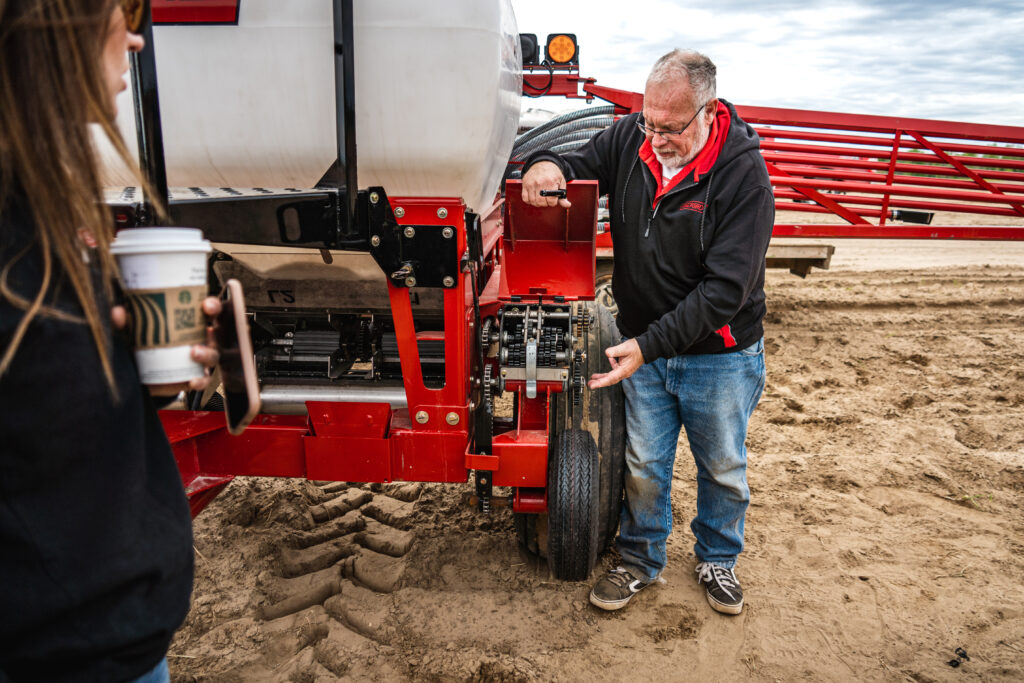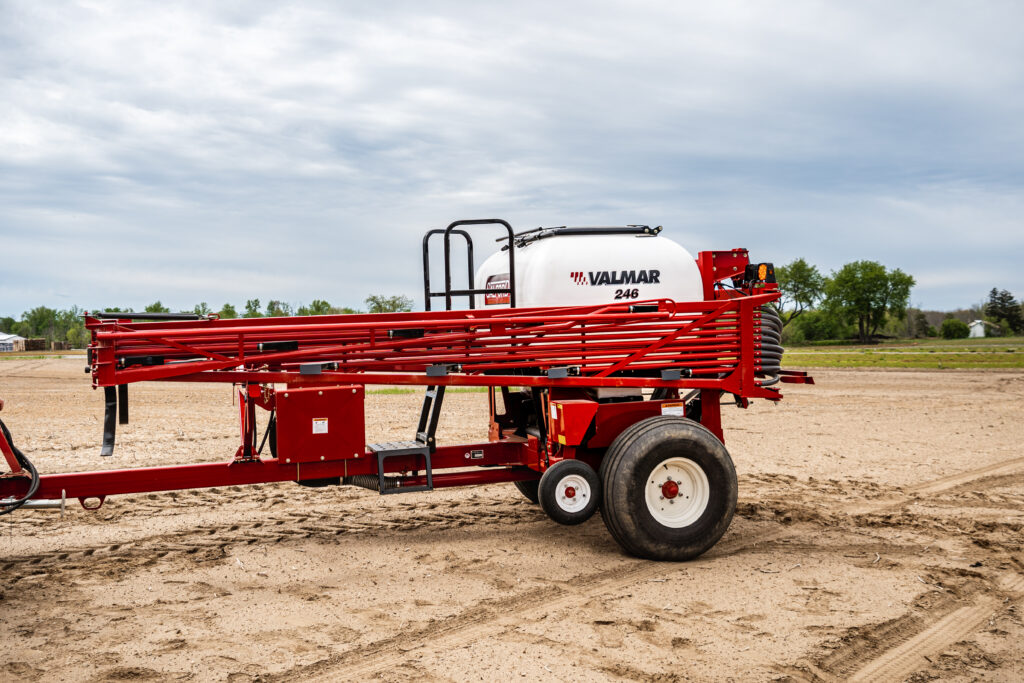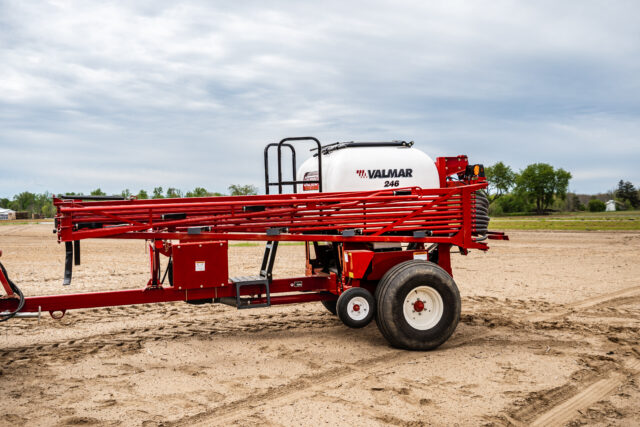When dealing with wet spring conditions, there may be instances where the ground will not support the weight of a regular seed drill without damaging the soil and causing compaction. Studies have shown that Canola seeded in late May or early June has the potential for better yield than waiting two weeks to plant with the standard, heavier equipment. We’ve seen many questions coming up about using tools like the Valmar 246, 56 Series, or air booms to float apply Canola seed. Here are some tips for getting canola seed in the ground in wet conditions.

1. Metering roller setup: Use the red 28 groove fluted metering roller which is designed for low application rate, smaller sized material.
2. Setting the hopper gates: Dropping the hopper gates to ⅛ inch gap should help achieve the lower rates required for canola seeding.
3. Determine your population: Picking a pound per acre rate and applying that for every seed variety may not be the best option. Instead, start with your target seeds per acre population and work the math backward based on the thousand seeds weight (or seeds per pound) provided on the seed bag. Be aware that your germination rate will likely not be as high as using a direct seeding method. Then set up your Valmar accordingly. Don’t feel like doing the math? We’ve provided an excel sheet that you can use to determine your target rate here.
4. Calibrate: Be sure to do a catch pan calibration to determine if you are achieving your desired pounds per acre. The product manual should provide you with a strep by step guide on how to calibrate your machine.
5. Pan test: Doing a pan test, if possible, will verify the results and help determine if any other issues such as blockages are present.
6. Working in the seed: The ideal seeding depth for canola is ½ to 1 inch. If using a tillage tool like the Salford Independent Series, we recommend setting the depth to 2 inches. This should help to achieve the appropriate seeding depth and good seed-to-soil contact. Cultivators and harrow bars have also been used with success. The tool used to work in the seed may be dependent on weight and the moisture level of your soils.
7. Rolling basket setup: If the tillage equipment you are using to incorporate the seed features a rolling basket, we recommend either lifting the basket completely or lowering the spring pressure as much as possible. This is to avoid throwing the seed around after the blades or harrows have gone through.
8. Be aware of the conditions: This planting method works best in fields with minimal residue. Fields with excessive trash or straw cover from a previous crop may cause issues with seed to soil contact. Many farmers who have done this recommend timing the planting so that there is rain within the next 7-10 days to improve germination and stand survival.
9. Your fertilizer program: Discussing your plan with a local agronomist is highly recommended. Some topics to discuss may include: Use of nitrification inhibitors to avoid nitrogen loss when broadcasting on wet soils, recommended levels of phosphorus which may give canola a quicker start and reduce time to maturity, whether split application of nitrogen and sulphur may be necessary, etc. Then decide on rates and application timing that will best suit the given conditions.
10. Crop insurance: Contact your regional crop insurance and determine rules and eligibility on broadcast seeding before continuing as rules may vary between different provinces and states.

Source: Canola Watch. (2022, May 26). Broadcast seeding canola: Tips. The Canola Council of Canada. Retrieved from https://www.canolacouncil.org/canola-watch/fundamentals/broadcast-seeding-canola-tips/
